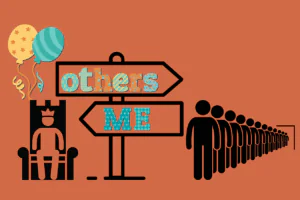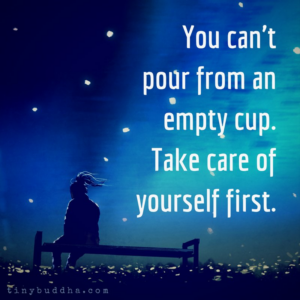Peter Levine (the developer of Somatic Experiencing) dynamically shifted trauma treatment to focus more on the body. He worked with ethologists (scientists who study animal behavior) and realized that animals essentially reset their nervous systems after a fight or flight episode. They do this through instinctually doing certain body movements that released the excess sympathetic nervous system arousal energy. Using this knowledge and other research, Levine went on to develop his theory about how the human body releases nervous system energy from traumatic events and restores connection.
What he learned is great news for people struggling with traumatic memories. Our bodies are designed to heal from highly stressful or trauma-inducing events. Now if you currently struggle with traumatic memories, this may not feel true to you. Enter sensation. Levine discovered that by slowly and gently re-working your relationship with your body and using simple body-cued tools that facilitate discharging stored nervous system energy, you can become friends with your own person again: body, mind, soul, and emotions.
How Somatic Experiencing Works
Somatic Experiencing is based on accessing the nervous system through various experiential components. It utilizes a person’s “felt sense” to access physical sensations, images, behaviors, emotions, and meanings that have been internalized from traumatic experiences.
By accessing these elements in the felt sense in a very slow, gentle and titrated way, you are enabled to do several things.
- Discharge stored energy that is bound in the nervous system by trauma and has negative impact on current functioning. This primarily is done by giving the body a chance to “complete” survival or protective responses that never got to occur in the actual event. For a sexual abuse survivor, this may mean making the physical movements of defending yourself against a perpetrator. For a veteran, it may mean using the imagination to be able to flee successfully from an IED attack. Every client situation is different because your experiences – and your body’s response to them – are unique.

- Integrate traumatic memories so that they no longer hold the power they once had in your life. When incomplete survival responses have a chance to finish and take the remaining “fight or flight” energy with them, the body can finally internalize that the trauma is over. With that full body realization and with the nervous system no longer stuck in the fight or flight response, energy is freed up to make new meaning of the event – It’s over now. I survived. I was able to protect myself.
- Support nervous system regulation. Trauma – whether it’s from shock or from chronic relational trauma in childhood – disrupts the autonomic nervous system (ANS). The pattern of that disruption can vary. For example, the sympathetic nervous system (the home of the fight or flight energy) might be stuck “on”. This can result in chronic anxiety or mania or other indicators of high sympathetic charge. Or the parasympathetic nervous system (the ANS “brake”) might be stuck “on”. This results in chronic depression or physical collapse. Somatic Experiencing uses the felt sense to help you learn to manage your nervous system in ways that support greater health and functioning.
These descriptions may sound like “voodoo” or “magic” or trying to erase your past. But SE is nothing of the sort. SE merely honors the body’s organic defensive mechanisms in the present, in a way that was not able to occur in the past event. And the nervous system is the road map. As you follow your body’s natural impulses in the present moment with the support of an SE therapist, your nervous systems can release the grip that your traumatic past has on you. You can be liberated emotionally and physically.
Somatic Experiencing Exercises
Somatic Experiencing, while a therapy for trauma, focuses at its core on nervous system regulation. So, these exercises can help you find calm during a charged moment or time of stress. Many of these exercises ask you to tune into sensation and emotion. If that’s a challenge for you, check out this resource that has excellent free lists of emotions and body sensations that can help you name your experience.
Notice Your Current Physical Comfort
Tune out of your circumstances for just a moment and bring attention to your physical comfort in this Somatic Experiencing technique. Take your time with each of these steps, so that you spend at least 1 minute with the entire exercise.
- While sitting in a chair, take a moment and notice your overall experience.
- Move your feet on the floor, moving and shifting until you really feel connected to the floor.
- Now feel your back and bottom on the chair, noticing how the chair supports you. Ask yourself, “Am I perching on the chair or allowing the chair to support me?”. Try to settle into the chair just a bit more.
- Adjust until you feel your comfort spot. Take a few moments to really enjoy the comfort of being supported by the chair and stabilized by the floor.
- Look around and notice something that feels resourceful (e.g. the tree right outside the window, a piece of art, a calming color, the floor, etc.). Savor the resourceful feelings.
- What do you notice now about your overall comfort – physically and emotionally? Do you feel the same as when you started or somewhat different?
If you take your time with this exercise, it can be surprising just how much settling you can achieve in your nervous system in just one minute.
Containment With Safe Touch
Somatic Experiencing therapy sometimes utilizes touch because it more directly intervenes with the nervous system. While the SE therapist might touch you with your permission, touch can also include self-touch. Touch is used for a variety of purposes in SE. This Somatic Experiencing exercise keeps you grounded by re-establishing a felt sense of containment in your body.
Again, take your time with each of these steps in this self-soothing and containing exercise.
- Take a moment and notice your overall experience.
- Take your right hand and place it just below your left armpit, holding the left side of your chest.
- Place your left hand on your right bicep (or shoulder or elbow – whichever is most comfortable and natural to you).
- Take some time to notice the feeling under your hands without judging it (e.g. does your body feel warm, what is the texture of your shirt, can you feel your heartbeat). Then take at least 30 seconds to notice how you experience this self-touch and maybe even savor it. Ask yourself, “Do I experience a sense of containment from my hands and arms? Is it pleasant? What happens if I tighten or loosen my hands and arms?”
- Now notice how the rest of your body experiences this touch (e.g. your lower torso, your legs, etc.).
- What do you notice now about your overall experience? Do you feel the same or somewhat different than when you started?
Recalling a Kindness
This SE exercise invites your physiology to settle again through recalling safety and kindness. Take your time with each of these steps in this exercise.
- Take a moment and notice your overall experience.
- Recall a time when someone was kind to you.
- Remember everything you can about this kind instance – the words, tone of voice, touch, gestures, or actions the kind person used to soothe and comfort you or to provide you with help or return you to safety.
- As you recall what the kind person did, notice how your body is recalling the memory right now – body sensations, etc. Is it almost as if you’re back there again?
- Recall the emotion you felt back then and notice what you feel now in this moment as you recall the experience.
- If a negative aspect of the memory arises, set that part of the memory on an imaginary shelf and come back to the sensory aspects of this memory of kindness.
- As you come to a close, notice what you’re feeling in your body now and your overall experience now compared to when you started the exercise.
When you’re stressed, it can take all your energy to keep from erupting with your frustration. Recalling kindnesses in this felt sense way helps keep this kind of venting at bay.
When You Felt Most Like Yourself
Peter Levine, PhD, the developer of Somatic Experiencing, uses this SE exercise to encourage settling and regulation in the autonomic nervous system. The first part of this exercise can help you find emotional and nervous system regulation and help to keep grounded.
- Take a moment and notice your overall experience.
- Then recall a time in the last 24 hours when you felt most like yourself – or the person you would hope to be more of the time. (Extend the time frame if something doesn’t come to mind from the last day.)
- As you remember this event in a detailed way – almost as if it was happening again – notice what happens in your body in this moment now. Especially notice your five senses in the memory.
- Recall another time you most felt like yourself or the person you’d like to be, this time within the last several weeks.
- Again, as you remember this event in a detailed way – almost as if it was happening again – notice what happens in your body in this present moment.
- What do you notice now about your overall experience?
This SE exercise can not only bring you back to your true north, it can help you ground in the felt sense of the present moment again.
The Voo Sound
The Voo Sound is a powerful technique that can bring significant settling. However, it can be stimulating for some people. So give it a try for the first time when you’re feeling safe and calm. Also, because this technique requires you to make a vocalization, you may want to be by yourself when you use it (think the bathroom, your car, or stepping outside).
- Take a moment and notice your overall experience.
- Now think of the sound a foghorn makes. (If you’ve never heard one, here’s an example.)
- Take a deep breath then imitate the foghorn, making a sound as low as you can in your vocal register that rumbles through your torso. See if you can feel the vibrations of the sound all the way down to your pelvic floor. (Note that this doesn’t necessarily mean you have to make the sound loud. The key is to make the pitch of the sound as low as you possibly can.)
- As you run out of breath on the Voo, let the next breath come in naturally. Take your time.
- If you feel a settling in your system, stay with that and enjoy it. If you feel your system more activated, which the Voo can produce for some people, even if they’ve found the exercise settling before, let go of this exercise for now and use another one I’ve listed to settle your system.
- If you find the Voo to be settling, feel free to do make the Voo sound again to see if you find even more settling. I don’t recommend doing Voo more than 3 times in one sitting.
- As you finish the exercise, what do you notice now about your overall experience?
This SE exercise can return a sense of ease, especially in your body’s core. This is in part because it gently vibrates the organs and structures of the torso, which can cause a relaxation in your overall system.
Somatic Experiencing offers many, many more exercises to help support nervous system regulation. You can find some of these exercises in Peter Levine’s book, Healing Trauma, and on his website.
If you are in Illinois and are curious about how Somatic Experiencing therapy might be helpful to you, trained SE therapists at Life Care Wellness can help you. Please reach out to us in our Northern Illinois locations in Glen Ellyn, Chicago (Jefferson Park), Sycamore, or Yorkville.
Rhonda Kelloway is the owner and principal therapist at Life Care Wellness, a group psychotherapy practice in Glen Ellyn, Sycamore, Yorkville, and Chicago (Jefferson Park neighborhood), Illinois. She is a trauma specialist utilizing a Somatic Experiencing framework to utilize the body’s wisdom in healing. She also uses EMDR and a variety of traditional psychotherapy approaches in her work. In addition to being a psychotherapist, she is a trained divorce and family mediator.




